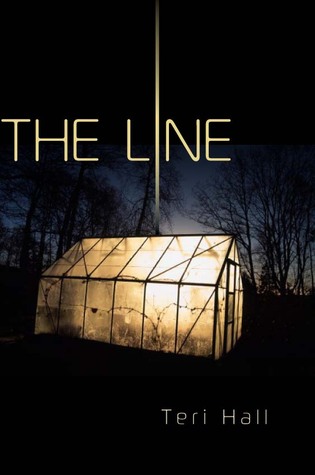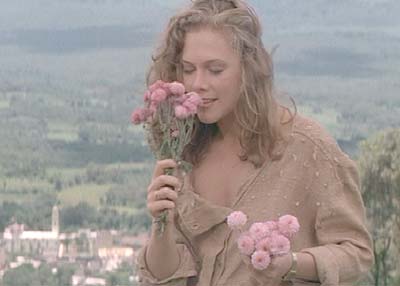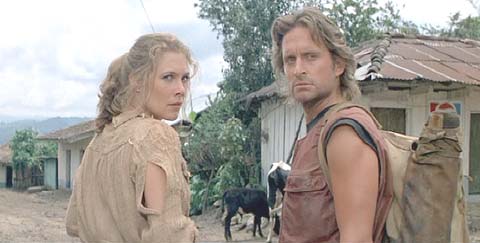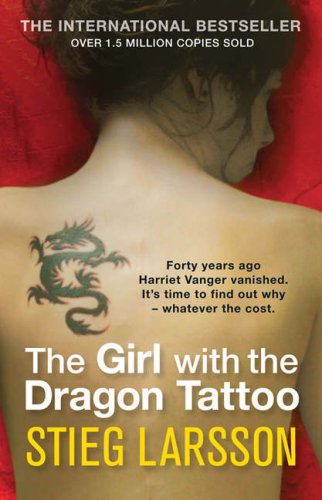
Mikael Blomkvist, a financial journalist, is hired by the CEO of the Vanger Corporation, Henrik Vanger, to write the family history. Blomkvist has just been convicted of libel against businessman Hans Wennerstrom. But writing the history is a front. Henrik really wants Blomkvist to discover who killed his niece Harriet in 1966. To entice Blomkvist, Henrik promises to provide him with information about Wennerstrom's shady dealings. During the course of the investigation, Blomkvist crosses paths with the girl with the dragon tattoo, Lisbeth Salander, a hacker with a photographic memory--and no one is better at digging up dirt than she is.
I read this book after hearing such excellent things about it from my dad. It's only fair, as recently I've been shoving YA books at him like no one's business, including
The Hunger Games and
Catching Fire (loved them, though suggested at first that THG might have been improved if Katniss and Peeta had actually swallowed those berries!), the
Obernewtyn series (up to
The Keeping Place) and the
Chaos Walking books (not enamored of them, unfortunately, which brought howls of protest from me). I've been aware of
The Girl with the Dragon Tattoo for a while as it's a bestseller here in Australia (and everywhere else in the world, too, it seems) but as I tend to avoid bestsellers out of sheer obstinacy I was never going to pick it up myself. But I can report that I'm very pleased this book found its way into my hands.
The Girl with the Dragon Tattoo begins slowly, and I found myself less than impressed I waded through pages of financial jargon. Nothing bores me more than stocks and brokers and shares and the book had a less than auspicious beginning for me. Thank goodness for Lisbeth Salander, otherwise I would have given up on Mikael Blomkvist and the Vangers and all the rest before the story had even begun. Salander probably has Asperger syndrome, though it's never explicitly said. She has difficulty with social interaction but has a photographic memory and a knack for digging up information that people are keen to hide. It makes her perfect for her line of work, which is investigations.
In Swedish, the title is
Men Who Hate Women rather than
The Girl with the Dragon Tattoo. I can't help feeling that this is a more apt title than the one this book is given in English; but far less poetic and mysterious. It's apt because this book really is about men who hate women. Each section of the text is divided up by gloomy statistics of sexual assault and violence perpetrated against women in Sweden. While on the surface this book seems to be a murder mystery, it's really far more than that, and it's this violent theme that holds all the threads of the story together.
Unsurprisingly, this book contains several violent and disturbing scenes. Like
The Windup Girl, this book isn't aimed at a young adult audience. I'm reviewing it here, however, because unlike
The Windup Girl I found the writing in this book to be highly accessible and some older teens (and you older YA lovers like me) will love this book. (I reviewed
The Windup Girl here, on the other hand, because the author has a YA book coming out later this year and some of you were probably curious about his first novel. Okay, I'll stop justifying why non-YA books are appearing on this blog now!)
The mystery itself--who killed Harriet Vanger--is an interesting one to unravel, and while the perpetrator is easily guessed at the hows and whys and even
whats aren't as transparent. I love research, and reading about a journalist researching a forty-year-old murder was fascinating to me. It also comes under the heading "Writers Doing Cool Stuff", and I adore that too. If this novel was merely about the murder, however, it wouldn't have been so engaging. What really won me over was Salander herself. It's difficult to say what I liked about her--she's far from endearing in the traditional sense. But she's terribly strong despite the difficulties due to her disorder (if I can call it that) and the handling of it by people who have power over her. She's withdrawn, and other characters often find her cold or stupid, but her reservation doesn't distance her from the reader. I just don't know how Larsson did it, which makes me at once awed and frightfully jealous.
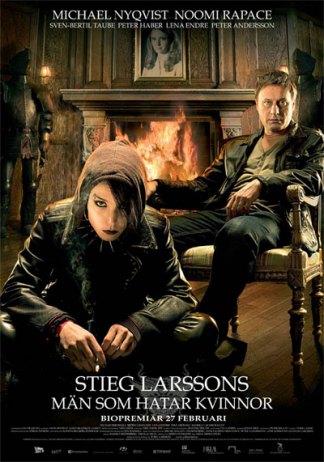 The Girl with the Dragon Tattoo
The Girl with the Dragon Tattoo is a thoroughly absorbing book. Read it on a plane or when you're in a reading rut and nothing else is holding your attention. Once you bust through the yawny financial stuff this book reads itself, taking you along for a very intriguing ride.
The film adaptation has just been released here and now I'm dying to see it. I'm rather sad, though, that Larsson never got to see the success that became of his labours, as he died in 2004 before publication of this book.




